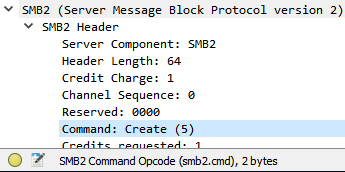

The Pathfinder data structure integrates several versions of the BPF control flow graph integrated into a composite structure. Specifically, this can be done using hashing ( P15, using efficient data structures) to perform exact search this can replace 500 comparisons with just a few comparisons.įigure 8.6. This suggests that integrating all the individual filters into a single composite filter can considerably reduce unnecessary comparisons when the number of individual filters is large. However, this is exactly analogous to a linear search for exact matching. Next, comparing the TCP port numbers in the packet to each of the 500 port pairs specified in each of the 500 filters is not obvious waste. Doing each filter sequentially would require comparing the Ethernet type of the packet 500 times against the (same) IP Ethernet type field and comparing the IP protocol field 500 times against the (same) TCP protocol value. To motivate the Pathfinder solution, imagine there are 500 filters, each of which is exactly the same (Ethernet type field is IP, IP protocol type is TCP) except that each specifies a different TCP port pair. This allows scaling to a large number of users. The need to deal with this change in environment (user-level networking) led to another successful mutation, called Pathfinder, Pathfinder goes beyond BPF by providing composability.

In particular, each TCP connection may provide a filter, and the number of concurrent TCP connections in a busy server can be large. However, this is not true if early demultiplexing is used to discriminate between a large number of packet streams or paths. For example, a typical Tcpdump application may provide only a few filters to BPF. Fortunately, this is not a problem for typical BPF usage. Thus the processing time grows with the number of filters. However, every packet must still be compared with each filter in turn. Guy Bruneau IPSS Inc.George Varghese, in Network Algorithmics, 2005 8.5 PATHFINDER: FACTORING OUT COMMON CHECKSīPF is a more refined adaptation than CSPF becauses it increases speed for a single filter.

ISC reader Crist provided a simpler way to write the above filter by combining all the octets of the source and destination IP address like this: (ip > 0xc0a81906) & (ip 0xc0a81906) and (ip 0xc0a81906) and (ip < 0xc0a81923) and tcp = 0x02)' This same filter could easily be expended to include search for a specific port instead of any ports to further narrow the search. Tcp = 0x02 -> If there is a successful match, only print those with SYN packets Ip Last octet of the IP address is less than 35 Ip = 0xc0a8 -> First two octets of the IP address is 192.168 Ip > 0x06 -> Last octet of the IP address is greater than 6 Ip = 0x19 -> Third octet of the IP address is 25 Tcpdump -nr filename '((ip = 0xc0a8 and ip = 0x19 and ip > 0x06) and (ip = 0xc0a8 and ip = 0x19 and ip First two octets of the IP address is 192.168 I used this filter for addresses located in the range 192.168.25.6 to 192.168.25.35.
#Smb2 wireshark display filter how to
The following example illustrates how to find SYN packets directed to natted addresses where an attempt was made to connect or scan a service natted to an internal resource.

23, /24) with a libpcap macro filter but when it comes to search for an unusual list of addresses such as 192.168.25.6 to 192.168.25.35, there is no simple macro to easily do it. It is quite easy to filter for a CIDR range (i.e. This week, I received a request to search for a range of destination addresses that cannot easily done using libpcap conventional macro filters but can be done using an IP protocol filter.


 0 kommentar(er)
0 kommentar(er)
